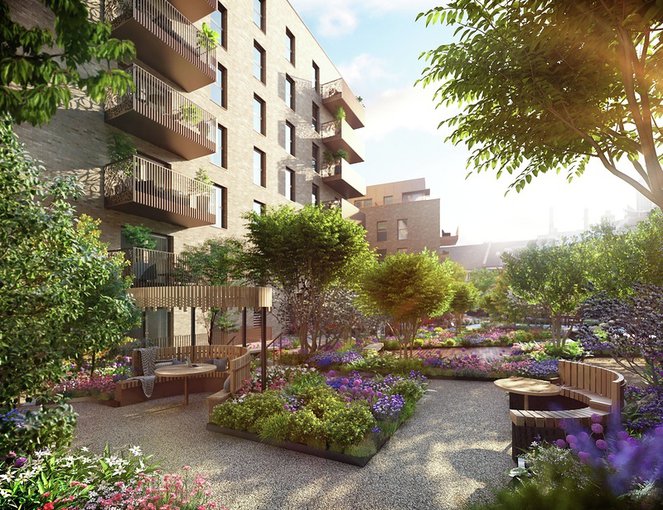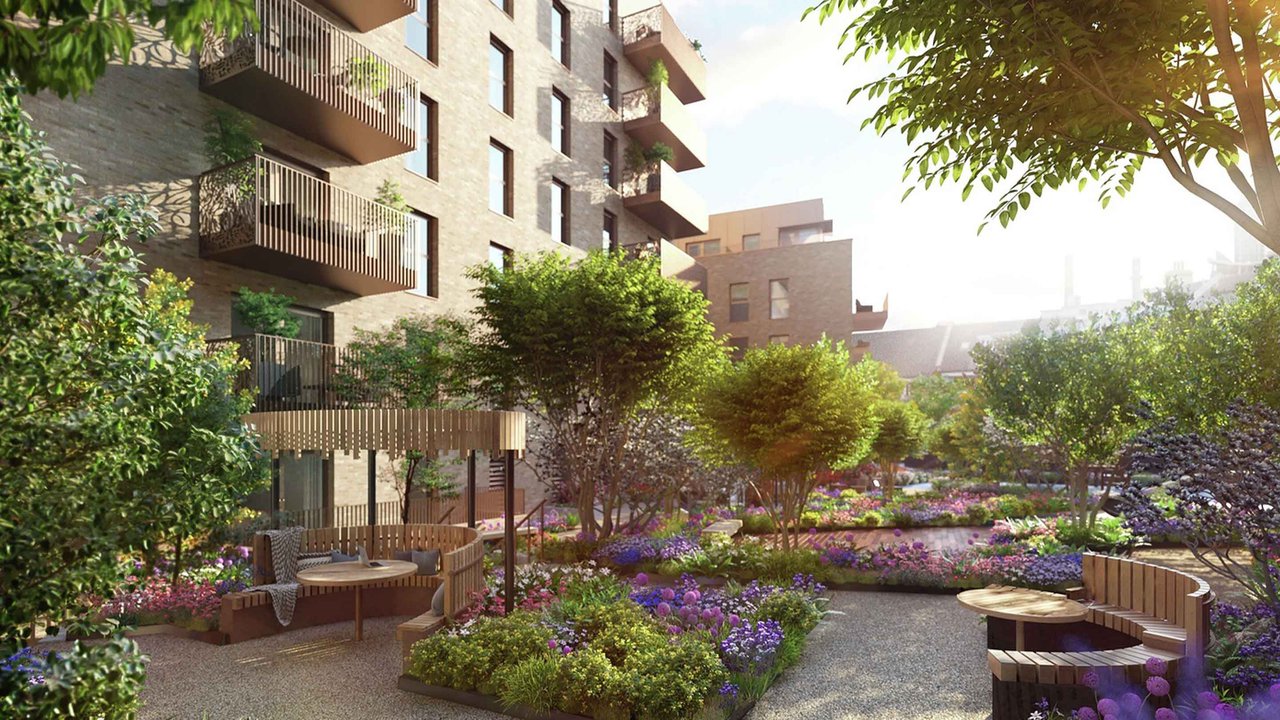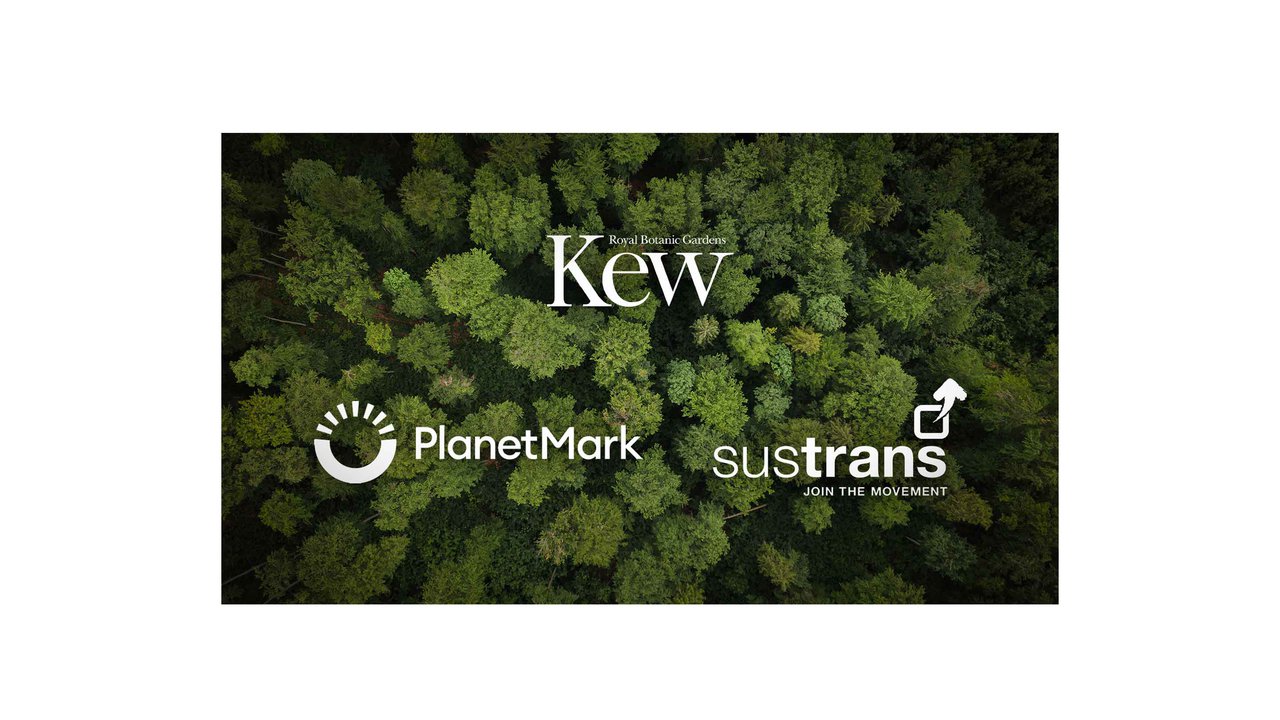
27/09/2022 • Partnerships
A new blueprint for solving London’s pollination crisis
A new blueprint has been launched to guide residential developers to create better places that safeguard secure and sustainable habitats for all pollinators. The new blueprint has been launched by a unique partnership between London residential developer Mount Anvil and Royal Botanic Gardens, Kew in response to the declining state of habitats for pollinators in growing cities.
Our cities require a broad range of pollinators
Pollination is one of the most important mechanisms in the maintenance and promotion of biodiversity and life on Earth. Somewhere between 75% and 95% of all flowering plants on the earth need pollinators to fruit, set seed and breed. This in turn provides food and habitat for a range of other creatures. The health of our natural ecosystems is fundamentally linked to the health of our bees and other pollinators.
However, the rise in popularity of urban beekeeping, in part encouraged by residential developers with good intentions, is creating a dominant pollinator species, the honeybee. Whilst any measure to promote bee populations should be encouraged, developers need to create a greater diversity of pollinators to support biodiversity in cities. The honeybee is only one of around 20,000 to 30,000 bee species in the world.
In fact, a recent Swiss study found an over-density of beehives in cities - it found ten hives per square kilometre where only seven can be supported. If this trend were replicated in the UK it would impact other pollinators species and deplete pollinator diversity, counter-intuitively harming biodiversity.
At the same time, UK cities like London face an urgent housing shortage. The blueprint therefore aims to guide residential developers to make the best decision in design, placemaking and ongoing maintenance and education to create places that support both people and pollinators.
The blueprint
Currently, there is no template that highlights the necessary requirements to create secure and sustainable habitats for pollinators, which the new set of metrics developed by Royal Botanic Gardens, Kew will achieve.
The Blueprint is split into four component parts – each pillar investigates a particular measurement that effects the stability of pollinator populations.
- Pollinator food resource score
This score seeks to evaluate the quantity and quality of food resources (pollen and nectar, larval food plants) available for pollinators by measuring floral cover, floral diversity, the percentage of native plant species and number of plant species supporting local pollinator species with specific needs. This pillar will reveal whether each real estate development has adequate plant life to support a diverse pollinator population.
- Pollinator habitat score
This component will be used to measure the different types of habitats within a site which are beneficial to a variety of pollinator species. This will include the amount of bare soil for ground nesting pollinators, dead wood habitat, ponds or other wet habitats, stone or gravel piles and trees and shrubs. All of these represent living and breeding habitats for a variety of different pollinator types.
- Site management
Understanding site management is a critical function of these measurements. Reduction of herbicides and insecticides on site will prove beneficial for all pollinator species as well as other insects which support biodiversity. Keeping designated habitats curated by reducing mowing on parts of the site will help achieve this goal, as will a designated annual site review to assess if the above criteria are being met.
- Engagement with residents
A final component seeks to measure the integration of education around biodiversity within the local community, including the provision of regular information regarding on site biodiversity such as through newsletters, signs, walks and tours with ecologists. Residents will also be actively engaged with green areas on sites, like pollinator recording and participation in cultivating new microhabitats and planting seeds.
Each of these critical components is scored according to RBG Kew biodiversity metrics in order that stakeholders can effectively and frequently assess their pollinator health on site.
Putting the blueprint into practice at Chelsea Botanica
The blueprint marks an important next step in Mount Anvil’s long-term partnership with Royal Botanic Gardens, Kew, which started with Chelsea Botanica, a riverside scheme Mount Anvil is delivering in joint venture with housing association Peabody in London Borough of Hammersmith and Fulham that will provide 50% affordable housing. Here, they will be working with Royal Botanic Gardens, Kew’s world-leading experts in pollination and nature-based solutions to design attractive landscaping for residents.
In particular, their scientists will be providing expert advice on plant species and habitat creation to support a diversity of pollinators and other animals, maximising the development’s biodiversity value.
Central to the designs are a one-of-a-kind garden. Mount Anvil has designed a beautiful, useful green space with a carefully considered arrangement and choice of species to boost biodiversity. These green spaces have been carefully arranged for the benefit of people as well as plants and wildlife. RBG Kew’s scientists have selected more than 70 plant and tree species to increase biodiversity and create valuable habitats for insects, birds and other wildlife.
As the final part of the blueprint makes clear, education is a fundamental part of improving and supporting London’s biodiversity. During the construction of the scheme, RBG Kew’s research scientists will also be educating young people from Hammersmith & Fulham on the importance of biodiversity and fighting climate change.
The partnership will also provide funding for a budding scientists’ annual placement working with the scientists at the RBG Kew. It has been recognised that to encourage long-term curation of these new biodiverse urban environments, educating members of local communities, inclusive of residents and neighbourhood school children is vital.
Killian Hurley, CEO, Mount Anvil, said:
‘We’ve spent 31 years working exclusively in London –sharply focused on the legacy that we leave with people in the city. Working with Royal Botanic Gardens, Kew to develop this unique biodiversity framework for our new schemes – and perhaps all new schemes in the city – is the next step in how we pursue better, differently for London. Paying attention to the needs of people and pollinators to boost wellbeing and protect the environment is supremely important to me.’
Pollination, People & Places
Find out more about our blueprint

